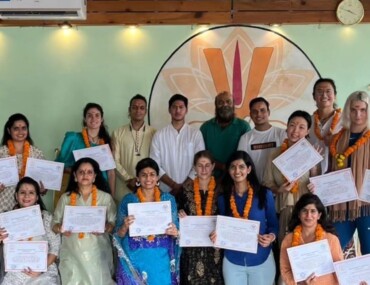When researching about different styles, one of the things that you encounter is variety. There are so many different types of yoga that have emerged that it would probably take one day just to discover all of them. There were not this many styles, to begin with though. In ancient India, yoga was a lifestyle. It was driven by the purpose of spiritual awakening and enlightenment rather than by different styles for different effects. Yogis used to practise yoga as a part of their ascetic life. They would also teach these practices to their students who lived in the ashrams with the gurus to learn before setting off on their own. Thus, yoga was pretty much a monopoly of the ascetics and their students who would also eventually renunciate their worldly lives. Yoga was only a part of that journey, albeit, an integral one.
Yoga In Modern Age
It was only much later, in the modern age, that yoga made an appearance in the lives of common people. Yoga was no longer taught exclusively to to-be ascetics but to anybody who was eager to learn. Yogis started coming out of their ashrams and teaching in schools. It was from here that styles evolved and diverged. Different yoga teachers developed their own styles and began to pass them on to their students. These styles also spread from India to the world and became even more popular. But the world was not familiar with the principles behind the different practices. As a result, in a way, the true meanings of the different practices got somewhat buried. Yoga began to propagate in a style-oriented way and not the philosophical manner it was intended to be. In this article, we will be looking at two such styles and the purpose behind each.
What Does Hatha Yoga and Kundalini Yoga mean
The origins of Hatha yoga and Kundalini yoga are like East and South – not opposite but absolutely different, yet connected. Hatha yoga stems from one of the eight branches that make up the holistic aspect of yoga. Do not confuse these eight branches with the Ashtanga or eight limbs of yoga in Patanjali’s Yoga Sutra. However, they do have somewhat similar connotations. These eight branches are Bhakti Yoga, Guru Yoga, Tantra Yoga, Jnana Yoga, Karma Yoga, Mantra Yoga, Hatha Yoga and Raja Yoga.
Yoga literally means unity or the action that brings this about. Thus, the practice of yoga refers to what one must do to achieve the unity of the individual with the universe. The eight branches each define the different paths to do so. These are devotion, dedication to learning, rituals, right knowledge, good deeds, meditative chants and physical discipline, respectively. The last one, Raja Yoga, refers to the highest level of yoga, by which one has full control over their mind, body and soul.
Thus, Hatha Yoga refers to the practice of the asanas to achieve oneness with the universe. In a way, it is an umbrella term for the physical poses that any student does in any style of yoga. When you join a Hatha yoga class, this physical aspect of yoga is what the teacher will focus on teaching you. Thus, Hatha yoga classes do teach the exercise aspect of yoga, as most Westerners see yoga as.
On the contrary, Kundalini yoga is partly out of the umbrella. The word kundalini refers to the energy lying coiled at the base of the spine. It can be awakened and redirected by the various yogic practices like asanas, pranayama, kriyas, mudras and bandhas. When it reaches Sahasrara, the crown chakra, the yogi experiences what is known as a kundalini awakening. Kundalini yoga is the amalgamation of all practices that lead to this spiritual awakening.
Spiritual Practice – Kundalini Yoga
Kundalini yoga is a result of the religious syncretism of various Hindu practices. The concept of Kundalini developed with the practices of Tantrism, mainly in Shakti cults. It derives mainly from Bhakti Yoga, Raja Yoga and Shakti Yoga. Its modern form has roots in Laya Yoga, due to the teachings of Swami Nigamananda. But if we are to talk about the popularisation of Kundalini Yoga, Yogi Bhajan is the one responsible for bringing its practice to the West.
However, because of Carl Jung, Kundalini Yoga principles and its correlation to modern psychology were truly understood in the modern world. Hindu and Buddhist canon text simply describes it as a yoga form meant to awaken the kundalini, the female energy and raise it through the Sushumna Nadi. This would unlock the different chakras up to the head or crown, where it unites with the masculine energy or Bindu, resulting in transcendence.
What are the Differences in the Practices of Hatha Yoga and Kundalini Yoga
A classical Hatha Yoga class is highly physical. You will be concentrating mostly on asanas, with breathing, chanting, meditation and other practices being secondary. But Kundalini Yoga is completely a spiritual practice. It does apply much Hatha yoga poses where necessary, but they have equal standing with kriyas, mantras, pranayama, meditation, bandhas, kriyas and mudras, if not less. In fact, in the asanas too, where Hatha yoga encourages correct postures and holding them, Kundalini yoga asanas are dynamic and mean to create motion, in the physical and subtle body.
A Kundalini Yoga class also uses the chant Ong Namo Guru Dev Namo instead of Om. It is Gurmukhi for “I call on the divine teacher within”. This is fundamental to the principle of Kundalini practices. Also, Kundalini classes use music with heavy Sikh influences due to Yogi Bhajan’s Sikh roots.
Which Type of Yoga is Better for You
Ask yourself what you are looking for. If it is just physical exercise, then you should choose Hatha Yoga. If it is spiritual liberation, then go for Kundalini yoga. But keep in mind that Kundalini yoga can be detrimental to the careless. Many yogis, who prematurely had their kundalini awakening had an unpleasant spiritual experience. It could entirely throw you off balance. Kundalini yoga requires a shuddh (pure) mind, body and soul, with unblocked chakras. So, if you have any unresolved mental, psychological, emotional or spiritual issues, you must solve them first. You must also let go of your ego and ground yourself. The only danger from Hatha Yoga would be physical accidents. So, consider both the positive and negative aspects before choosing one.




